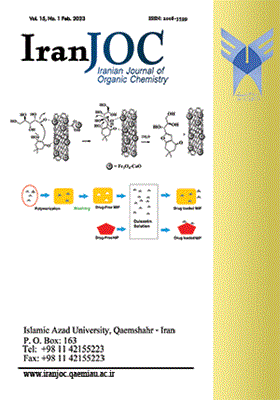-
-
List of Articles
-
Open Access Article
1 - Graphical Abstract
-
Open Access Article
2 - Functionalized metal-organic frameworks interacting with Histidine amino acid: DFT study
Anahita Bakhshandeh Fatemeh Ardestani Hamid Reza Ghorbani -
Open Access Article
3 - Synthesis, characterization and properties of hydrogel based on acrylic acid composite for removal of cadmium ion from wastewater
Arman Samadzadeh Mamaghani Mohammad Reza Manafi Mohammad Hojjati -
Open Access Article
4 - Synthesis of some chiral compounds using (MWCNTs)-COOH/Fe3O4-CaO magnetic nanostructures
Omekolsoom Shabani Navabeh Nami Rahimeh Hajinasiri Masoumeh Hosseinzadeh -
Open Access Article
5 - The possibility of adsorption of Duloxetine antipsychotic drug from blood plasma by using its molecular imprinted polymer
Naghmeh Ali Kahi Bahram Daraei Leila Torkian Maryam Shekarchi AmirHossein Monzavi -
Open Access Article
6 - Green synthesis of isoquinoline derivatives using mlticomponent reaction of ninhydrin
Samanehsadat Sharifi Narjes Haeizadeh -
Open Access Article
7 - Synthesis of iminofurane derivatives using one pot multicomponent reaction: Dynamic NMR Study
Sayyed Jalal Shams-Najafi Maryam Ghazvini Faramarz Rostami-Charati -
Open Access Article
8 - A Simple and one-pot synthesis of imintriazole derivatives under Solvent-free conditions
Narges Ghasemi Parvaneh Firoozi Khanghah Mahboubeh Ghasemian Dazmiri -
Open Access Article
9 - Synthesis of isoquinoline and quinoline derivatives using multicomponent reactions of ammonium acetate
Samanehsadat Sharifi Samira Khandan
-
The rights to this website are owned by the Raimag Press Management System.
Copyright © 2021-2025







